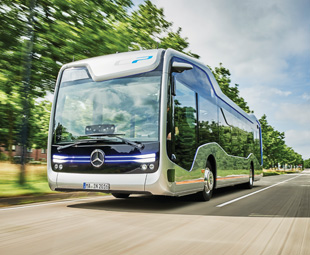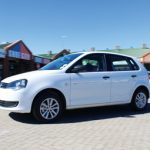Does our transport system have the right DNA?

At the 2016 Southern African Transport Conference, which took place in July, two of the issues raised were whether sustainable transport is possible in South Africa, and whether smart data technology can help. CLAIRE RENCKEN reports
One of the references used during the conference, was a paper compiled by Johan Bosman and Friedrich Slabbert. The paper is entitled: A route towards sustainable transport in South Africa. It postulates that transport in South Africa, does not have the right “DNA” and suggests a route towards sustainable transportation for South Africa by 2030.
According to Bosman and Slabbert, a sustainable transport system needs to meet the current transport and mobility needs without compromising the ability of future generations to meet their own transport needs.
They examine and interpret some of the suggestions from the National Development Plan 2030, which make up some of the steps that need to be taken in order to ensure sustainable transport, as follows:
• Prioritisation: Transport decisions usually involve expensive, expansive systems that take years to build and are in place for decades. Given the financial and time commitment demanded by such decisions, it is important to carefully rank competing options using clear decision-making criteria. Focus should be on safety, affordability and efficiency, rather than on trying to incorporate all transport options.
 • Focus on transport as a system: Instead of focusing on a particular transport mode, emphasis should be placed on the total transport network. This systemic approach will help improve transport efficiency and accessibility, while reducing the overall environmental, social and economic costs.
• Focus on transport as a system: Instead of focusing on a particular transport mode, emphasis should be placed on the total transport network. This systemic approach will help improve transport efficiency and accessibility, while reducing the overall environmental, social and economic costs.
This approach should also consider transportation options that would contribute towards South Africa’s decarbonisation efforts, for instance, the use of electric buses or offering companies incentives for using delivery vehicles powered by liquefied natural gas.
• The big picture approach: Social and economic mobility does not necessarily depend on a transport system. Spatial planning – for example, establishing more economic opportunities where people live or creating new settlements close to work hubs – could also provide a solution. However, this is a long process. In the medium term, South Africa will probably continue to experience increasing traffic congestion.
• Behavioural change: This is critical for reducing the environmental, social and economic costs associated with transport. Targeted communication campaigns and the availability of alternatives have the potential to improve South Africa’s transport situation by shifting public thinking about public transport and transport that uses alternative energy sources.
For instance, while some forms of private transport (such as cars), will still be used in 2030, there will be a marked move towards public transport as more options become available to commuters.
In another paper, compiled by Andrew Aucamp, Michelle Pearton and Sarel Jansen van Rensburg, the eThekwini Transport Authority (ETA) in KwaZulu-Natal is examined. The ETA is currently developing and pursuing smart city strategies and interventions to make it a better environment in which to live.
 The paper, entitled: Using data smartly – moving towards a smart city, examines how effective the ETA’s smart city initiative has been. This initiative enables the Department to conduct research and analyse data, in order to more effectively manage the Department and facilitate better decision-making.
The paper, entitled: Using data smartly – moving towards a smart city, examines how effective the ETA’s smart city initiative has been. This initiative enables the Department to conduct research and analyse data, in order to more effectively manage the Department and facilitate better decision-making.
To date the smart city Portal has yielded the following practical benefits already:
• It has identified intersections with high incidents of traffic accidents. This information assists when prioritising repairs and maintenance of faulty traffic signals.
• Geo-referencing traffic signal fault data has helped to identify locations for proactive maintenance and related management decisions to improve efficiencies and effectiveness.
• The visual spatial display of accident data has helped to improve the road safety plans. This has included pedestrian accidents involving children within 200 m and 500 m of schools, heavy vehicle accidents, dusk and dawn accidents where there is no street lighting, high accident frequency areas by: accident type, time of day and vehicle type.
• The portal has demonstrated to senior management within the ETA the benefit of smart city initiatives, in terms of management information that can improve both management and maintenance.
As Aucamp, Pearton and Jansen van Rensburg state, technology is advancing at a rapid rate and can potentially assist in developing solutions for the provision of new services. The various digital platforms, technologies and networks have enhanced digital connectivity and the ability to collect, analyse and use data.
Therefore, it is safe to conclude that, if our transport system’s “genetic make-up” can be successfully modified, and smart data is used efficiently to enhance systems and services, perhaps, by 2030, South Africa could have a sustainable transport system in place.
Published by
Focus on Transport
focusmagsa




